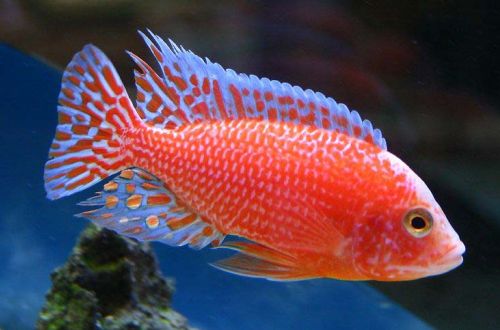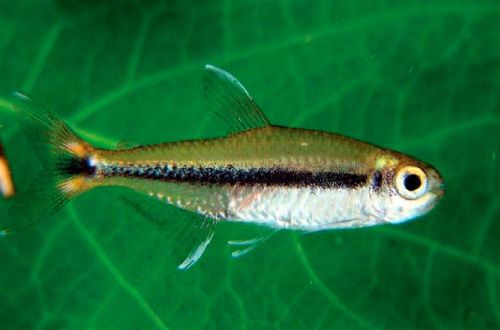
spotted swordmouth
Spotted swordfish or Boulangerella spotted, scientific name Boulengerella maculata, belongs to the family Ctenoluciidae (South American swordfish). The fish is named after the Belgian-British zoologist George Albert Bulenger (1858-1937). This peaceful predator is relatively easy to keep, if the diet is properly selected, and will perfectly complement the community of other calm large fish.

Contents
Habitat
Comes from South America. Inhabits the vast Amazon basin, as well as the neighboring Tocantins and Orinoco river systems. It occurs everywhere in calm sections of rivers, backwaters, in places with dense aquatic vegetation.
Brief information:
- The volume of the aquarium – from 300 liters.
- Temperature – 22-28°C
- Value pH — 5.0–6.5
- Water hardness – soft (1-10 dGH)
- Substrate type – any
- Lighting – subdued
- Brackish water – no
- Water movement – moderate or weak
- The size of the fish is up to 30 cm.
- Nutrition – high-protein food from pieces of fish meat, shrimp, mussels, etc.
- Temperament – predatory, incompatible with other smaller fish, but at the same time peaceful
- Content both individually and in a small group
Description
Adult individuals reach a length of up to 30 cm. The shape of the body resembles a pike with a large elongated mouth and a powerful tail designed for quick jerks for prey swimming nearby.
The body color is gray with a pattern of their rounded dark spots. In fish inhabiting the upper Amazon basin, a black stripe runs along the body, which is absent in fish from the lower reaches. The presence of the stripe gives it a great resemblance to the closely related species, the Haracin pike, which lives next door in the Orinoco River.
Maintenance and care, arrangement of the aquarium
An aquarium of 500 liters and a length of 150 cm or more is enough for a single maintenance of the Spotted Swordfish. In the design, the main attention is paid to the upper tier. It is necessary to provide places for shelter in the form of thickets of plants, including floating ones, and high, reaching the surface, snags. The aquarium must be equipped with a lid to prevent fish from accidentally jumping out.
Optimum conditions are achieved in warm, soft, slightly acidic water rich in oxygen. Regular maintenance and trouble-free operation of the filtration system will keep the level of natural pollution at a low level.
Food
In nature, it feeds on small fish, insects, worms, hunting from ambush. In the home aquarium, feed according to the recommendations of the breeders from whom the Spotted Swordfish was purchased. As a rule, the basis of the diet is fillets of fish meat, mussels, shrimps, earthworms, and some insects.
You can not feed the meat of birds and mammals (beef, pork). Such foods are poorly digested and can cause digestive problems.
Behavior and Compatibility
Despite its predatory disposition, Boulangerella spotted is not aggressive and even shy. As neighbors, peaceful large fish should be selected that will not show hostility or territorial behavior. A good choice would be species that live in the bottom layer, for example, Geophagus, catfish of the Bronyakov and Lorikariev groups, as well as so-called “freshwater barracudas” of a similar temperament. They get along well with relatives.
It is worth remembering that any fish that can fit in their mouth is likely to be eaten!
Fish diseases
Being in a favorable environment and getting a balanced diet reduces the likelihood of illness to a minimum. Design elements may be the main threat. Being an ambush predator at the time of the attack (jump), the Spotted Swordfish can get injured. In aquariums, the tip of the mouth is most commonly damaged, causing complications in the form of bacterial or fungal infections.
Read more about the causes, symptoms, and treatments in the Aquarium Fish Diseases section.





